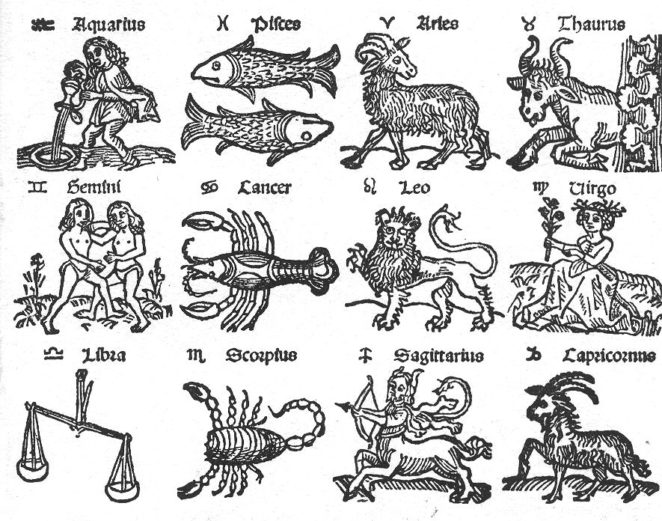
The name Zodiac refers to the twelve
constellations of stars that are of particular interest to astrologers.
Everyone knows which “sign” they belong to, but what do they mean in reality?
The plane of Earth’s orbit around the Sun
is known as the Ecliptic. It is also the plane within which all the recognised
planets orbit. Given that the passage taken by Earth round the Sun takes one
year to complete, the star background on the opposite side of the Sun as seen
from Earth also changes.
The ancient Greeks distinguished twelve
constellations though which the Sun appeared to pass. These are the Zodiacal
constellations of Capricorn, Aquarias, Pisces, Aries, Taurus, Gemini, Cancer,
Leo, Virgo, Libra, Scorpio and Sagittarius. It has to be said that they are not
necessarily the most recognisable constellations in the night sky!
One problem with determining these as the
Zodiacal constellations is that they are not all the same size, and so it is
not true that the Sun is “in Leo” (for example) for one month before moving
entirely out of Leo and into Virgo.
An even greater problem is that the degree
of the Earth’s tilt has changed slightly since ancient times, and this is
enough to have disrupted the pattern of the Zodiac constellations in terms of
their appearance in twelve equal episodes.
However, these problems do not seem to have
bothered the astrologers, who stick to the original Zodiacal dates on the
assumption that the mythological attributes of the creatures whose names have
been given to the constellations are just as relevant to the personalities of
people born at specific times of the year as they ever were.
Of course, given that the whole concept was
barmy in the first place, the fact that the Zodiac constellations are in the
wrong places makes not a blind bit a difference – it was nonsense in ancient
times and still is today!
© John Welford
No comments:
Post a Comment